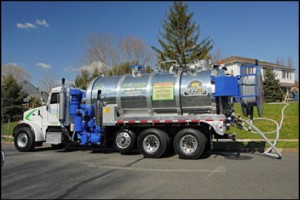 Here is a basic understanding of what a septic system is and how it works.
Here is a basic understanding of what a septic system is and how it works.
So now your septic system has begun to act up, or you may be facing the possibility of expensive repairs or replacement of your septic system and you wish that you had a more detailed understanding. If your facing these problems or just looking for a DIY treatment, do not want to be taken advantage of because of your lack of understanding all of the terms. We have many readers who ask us about the definitions of these terms or a term related to their septic system. While many of the terms we have listed here are basic in nature, having a clear understanding of what may be malfunctioning in your system makes finding a solution that much easier.
Septic System: An on-site, septic disposal system. Designed to take the waste from your home and digest, liquefy and return to the earth. Modern Septic Systems usually contain a buried, concrete tank that is usually 1,000 to 1,500 gallon capacity. This tank is where the solid waste from your home is stored until the bacteria and enzymes present in the tank can breakdown and liquefy the waste. Once Liquefied, the waste can then leave the septic tank area and drain into the soil via drain fields and then ultimately back into the water table.
Drain Field: A drain field is the portion of your septic system that takes the liquefied waste from your septic tank and disperses it throughout a particular portion of your property. In the drain field, liquid waste is returned to the earth, often through gravel deposits and then of course back to the water table.
Cesspools: Essential Cesspools are septic tanks with a slightly different design. This underground receptacle holds solid waste while allowing the liquid waste to seep out into the ground through the bottom and the edges. This is a commonly misused term, although its definition pertains primarily to the design.
Biomat: Biomat is another commonly used term. It is the densely compacted, decaying solid waste that can cease the downward flow of water. Biomat is commonly found throughout drain field or leach fields causing clogged or backed up flow. It builds up at the gravel and soil interface causing liquid to back up and flood. This is at the root of flooded or standing water over the drain field.
Effluent: Also referred to as the liquid waste from a septic tank. Effluent is the result of bacteria and enzymes digesting the solid waste from your home. Effluent is then drained out into the soil via the drain fields. Effluent travels through the many layers of earths’ natural filtration system and then ultimately back into your water table.
Sludge: Sludge is the semi-solid material found in septic tanks, cesspools and the like. Typically floating on the surface, this sludge or bio-solids, can become overwhelming and cause major septic system clogging if not dealt with. Also referred to as Sewer Sludge, the definition is the same.






